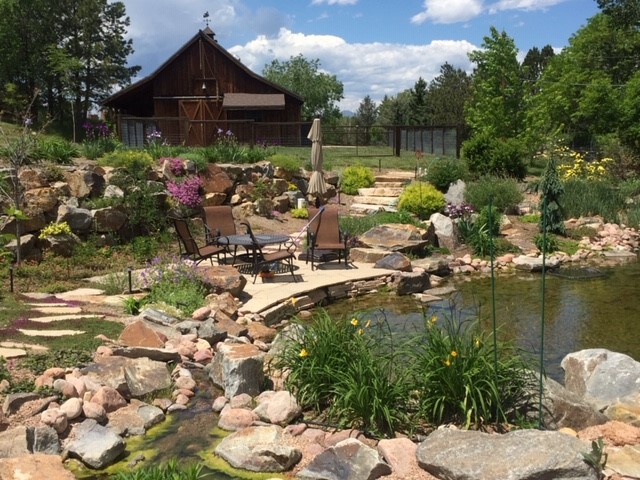Ponds, Streams & Waterfalls
It's like an old, familiar tune: When you've been working on major projects with the same group of people for more than a quarter century - always with common principles, shared experience and similar goals in mind - it's easy to pick up the instruments and start playing again without a moment's hesitation. That's exactly how it felt for us at Pinnacle Design Co. (La Quinta, Calif.) when we were called on to revamp key elements at The Vintage Club, a private, 36-hole golf facility in Indian Wells, Calif. We did our first work there in 1994 and have been involved in numerous landscape and waterfeature enhancements since then with renowned course designer
Pond installation offers lots of opportunities for straying off the naturalistic path, but to me, there's no more problematic detour than the unfortunate "string-of-pearls" effect. When this happens, the edge of a pond looks more like Wilma Flintstone's rocky necklace than it does like the banks of a natural body of water. And it's a double shame, because the installer went to all the trouble of sourcing and placing natural material - but ended up with completely unnatural results. I've seen too many of these nightmare ponds through the years. Some are the result of a do-it-yourselfer's lack of awareness. It also happens with
I retired a while back after working for more than 20 years as a pond designer and installer. The result of that change in life is that I'm busier than ever. I still hear, for instance, from old clients who want me to come back to modify or expand an existing pond/stream/waterfall system. Those requests, often from people who have become good friends through the years, are hard to resist. More often, however, I'm being asked to teach. I'm frequently approached by
In the course of my career as a landscape architect, I've had the good fortune to work on the full range of possible projects, from residences to commercial and institutional properties and in spaces ranging from the compact to the vast. Through all of this experience, I have to say that working on botanical gardens, in whole or in part, has been about as satisfying as it gets. The first two articles in this three-part series have demonstrated some of the potential these facilities have to
Puzzled by its bad reputation among some of his clients, Mike Gannon began doing research on gravel. He'd always believed in its value, he says, but found a rich history that now aids in him on occasions when he needs to talk his clients through their moments of doubt.
Among the most rewarding of all the projects I tackle are those in which a pond, stream or waterfall is meant to be a teaching tool. The lessons don't have to be difficult to grasp or challenging to deliver: They simply add a layer of meaning, depth and value to the work that sharpens my interest and lifts my spirits. The stream system at Reed Street Yards in Milwaukee, Wisc., was a source of just this form of personal satisfaction: The city has been positioning itself as a global leader in all things related to freshwater systems, and my participation here had to do with an incubator/think tank complex aimed at expanding on the efforts of the
Jets and sprays are welcome additions to ponds because they look great. But if the designer or installer follows a few key guidelines outlined here by Roy Watkins, the list of benefits will expand to include an overall improvement in water quality and a healthier environment for fish.
Generally speaking, the folks who visit botanical gardens fall into two categories. The first includes local residents who can best be described as garden enthusiasts - the sort who visit monthly, weekly or even daily to follow the lifecycles of favorite trees, shrubs and plants and can spend countless hours observing the diurnal operations of flowers or of the birds who come and go as a year progresses. The second group, generally larger and often much larger, includes local residents who stop by the gardens only when
This project came my way as a lot of them have through the years: A landscape contractor had been tasked with organizing things on a large estate property and called me in to work with the homeowners on the pond they wanted. During our first meeting on site, I took an immediate liking to the couple, and she in particular had bountiful ideas about what she wanted. As we walked the estate together that day, she pointed toward the boggy depression at the edge of the property where we'd be placing the pond - quite close to a community bridle path - and said she wanted




















